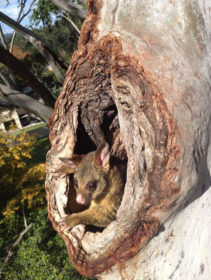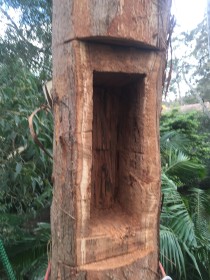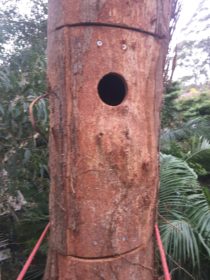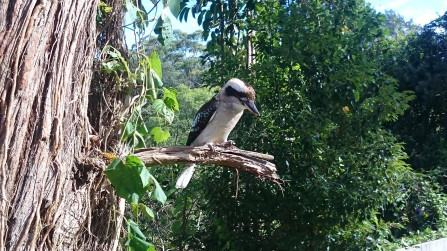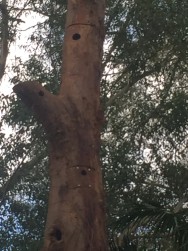Tree Habitat Preservation and Hide Constructions.
All trees provide habitat to various different types of native fauna whether it be bird life, mammals, marsupials or reptiles. Whilst some trees unfortunately need to be removed for safety reasons there are also several that can be heavily pruned or significantly reduced in size to reduce the risk of failres to an acceptable level whilst also maintaining a habitat site for native wildlife.
In particular if there happens to be any nesting birds or native wildlife living in hollows that are already present then it is extremely important that we do not remove these sections of the tree that contain the hollows. Displaced wildlife will often struggle to find a new habitat in the first year and can struggle to survive. With the percentage of urban tree cover continually decreasing across many suburbs of sydney it becomes all the more important to preserve their current environment.
In addition to preserving habitats that are already present, Sydney Tree Solutions is also actively involved in creating new habitat hides in tree trunks and branches that currently have no hollows. This is done on live and dead trees that would otherwise be removed because they have too many safety issues but by drastically reducing the canopy down and leaving approx 50% of the trunk still standing we can significantly reduce the risks of any failures. This does however require ongoing maintenance of the epicormic growth from these trunks to ensure any large epicormic growths are removed before they could possibly fail (epicormic growth as significantly weaker than regular branches in their early stages which is why “lopping” is typically an illegal practice).
Habitat Hides are basically holes of various sizes that are cut into the tree trunk or branches to provide hollows to suit different types of wildlife. As part of the process a face plate for the hide is first cut, an entrance hole is drilled and the face plate is then reattached over the front once the inner nesting hollow has been created. The climbers required to create these hollows and cut face plates need to be extremely skilled in the use of chainsaws since its a fairly technical procedure. By adjusting the size of the entrance hole and the inner hollow dimensions it is possible to specifically target different species of wildlife to each habitat hide. For further gallery photos of the procedure and details of the specifications required for each species of native wildlife then see our How to Create a Habitat Hide Paper.

